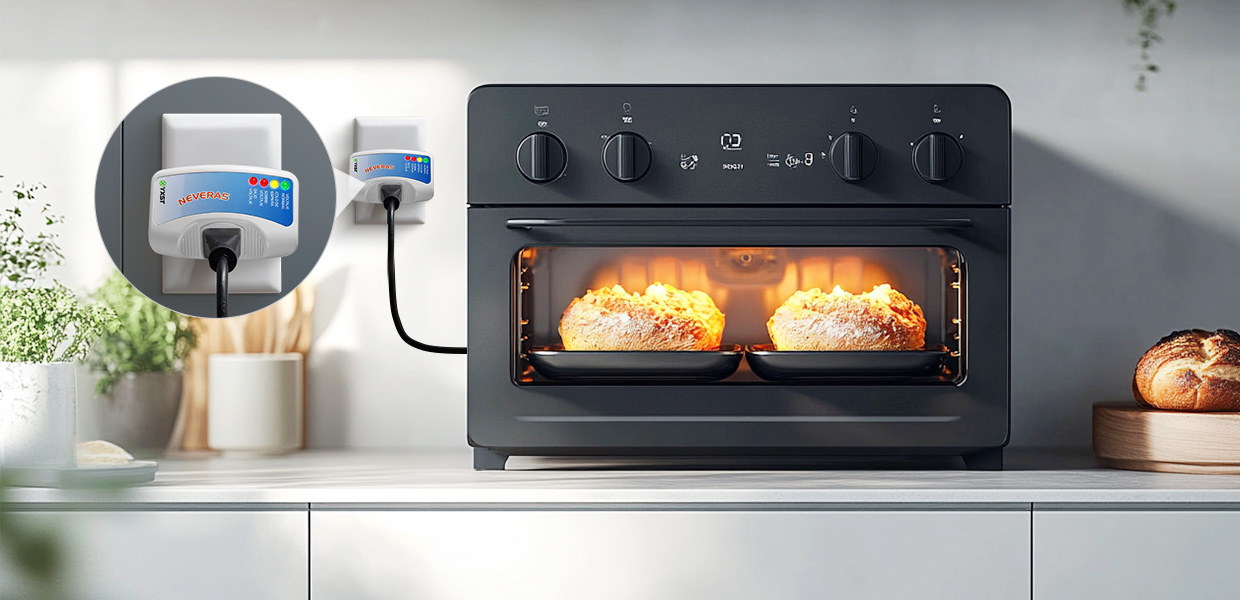Joule Demand and Protection Strategy for Household Appliances
Date:2025-05-09 Click:785
Correspondence between electrical appliance power and joule consumption
Different electrical appliances have different demands for surge energy due to power differences. For example, 12A electrical appliances (electric kettles, microwave ovens, etc.) consume about 1440-1800 joules per hour and may be subjected to instantaneous energy shocks caused by power fluctuations during actual operation. Studies have shown that the instantaneous current when an electrical appliance starts can reach 3-5 times the rated value, so the protective equipment must have the corresponding energy absorption capacity.
Adaptation principle of joule level
The joule value of the surge protector represents the upper limit of the cumulative electrical energy that can be absorbed: ・Equipment below 1500W (such as 12A rice cooker): 800-1200 joules are recommended ・Equipment 1500-3000W (such as 15A refrigerator): 1500-2000 joules are recommended ・Equipment above 3000W (such as 20A air conditioner): 2500 joules or more is required. Each surge absorbed will permanently consume the protector energy reserve, and high-power equipment should reserve 20% redundancy.
Typical home appliance protection scheme design
Protection configuration of small electrical appliance group
12A electrical appliance group (juicer/soy milk machine, etc.) mostly adopts a parallel protection structure. The built-in MOV component adopts a layered design, with a single module absorbing 400 joules, and three modules in parallel can reach a total capacity of 1200 joules. Such equipment must be equipped with lightning protection tubes with a response speed of 0.1μs to deal with transient overvoltages below 500V.
Exclusive protection for high-power equipment
It is recommended that equipment such as 20A air conditioners adopt a two-stage protection architecture: the first stage absorbs 80% of the sudden energy (3000 joule MOV component), and the second stage finely filters the residual fluctuations (500-joule TVS diode). This combination can reduce the 4000V lightning surge to within 600V which the equipment can tolerate while achieving a 97% energy dissipation rate.
Analysis of the core technology of single-phase AC surge protector
1. Operating Voltage
The maximum continuous operating voltage (Uc) of the surge protector is its core parameter, which needs to adapt to the voltage fluctuation range of the power grid.Technical points:
General selection: In a single-phase 230V system, Uc needs to cover the fluctuation range of the power grid, and common values are 275V, 320V, 385V, etc.
2. Operating Frequency
It needs to be compatible with the frequency characteristics of the power grid to ensure that the response speed is synchronized with the power grid.Technical points:
Frequency range: Adapt to 50Hz/60Hz systems, and reduce frequency sensitivity through circuit design optimization (such as filter modules).
3. Over Voltage Cut-off
Dual protection mechanism for transient high voltage (lightning surge) and continuous overvoltage (power grid failure).4. Under Voltage Cut-off
Under Voltage Cut-off is a protection mechanism that automatically cuts off the circuit when the voltage is lower than the preset critical value by monitoring the power grid or equipment supply voltage. Its core goal is to prevent overcurrent, overheating, and abnormal operation of the equipment due to low voltage, and to ensure system safety and equipment life.5. Output Capacity
Defined by nominal discharge current (In) and maximum discharge current (Imax), it reflects the surge discharge capability.


